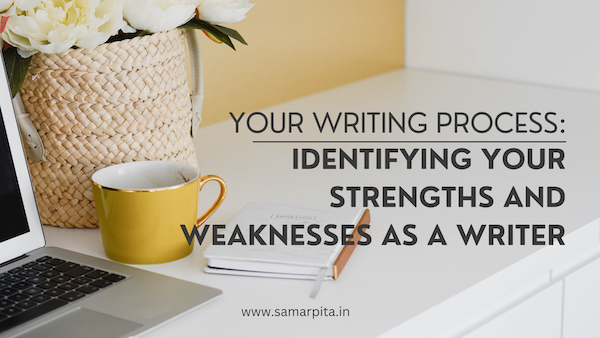Every writer has a unique writing process. Some writers prefer to outline their ideas before starting to write, while others prefer to dive straight into the writing process. Regardless of your preferred method, it’s important to identify your strengths and weaknesses as a writer. In this blog post, we will explore some strategies for identifying your strengths and weaknesses as a writer.
Also Read: X-Factor Editing Techniques: Going Above and Beyond
The first step in identifying your strengths and weaknesses as a writer is to reflect on your writing experience. Think about the types of writing you have done in the past, whether it’s academic writing, creative writing, or business writing. Consider the feedback you have received on your writing, both positive and negative. Ask yourself what aspects of your writing you are confident in and what areas you feel you could improve.
The second step is to analyze your writing process. Think about how you approach writing and what techniques you use. Do you prefer to write in a quiet environment or with background noise? Do you like to brainstorm ideas before starting to write, or do you prefer to write freely without a plan? By understanding your writing process, you can identify what works for you and what areas you may need to improve.
Also Read: Story Structure: Understanding the Elements of Plot and Narrative Arc
The third step is to seek feedback from others. Sharing your writing with others and asking for feedback can be a valuable tool for identifying your strengths and weaknesses as a writer. Consider sharing your work with a writing group, a friend, or a professional editor. Ask for feedback on the areas you are unsure about, such as your grammar, structure, or style. Be open to constructive criticism and use it as an opportunity to learn and grow as a writer.
The fourth step is to identify your strengths and weaknesses in specific areas of writing. Consider the different elements of writing, such as grammar, punctuation, structure, style, and voice. Ask yourself which areas you feel confident in and which areas you struggle with. By identifying your strengths and weaknesses in specific areas, you can focus your efforts on improving your weaknesses and enhancing your strengths.
Also Read: Freelance Editing: How to Get Started
The fifth step is to create a plan for improvement. Once you have identified your strengths and weaknesses as a writer, it’s important to create a plan for improvement. Set realistic goals for yourself, such as improving your grammar or expanding your vocabulary. Consider taking writing classes or workshops to improve your skills. Practice writing in different styles and genres to challenge yourself and expand your abilities.
In conclusion, identifying your strengths and weaknesses as a writer is an important part of the writing process. By reflecting on your writing experience, analyzing your writing process, seeking feedback from others, and identifying your strengths and weaknesses in specific areas, you can create a plan for improvement and enhance your writing skills. Remember that writing is a process, and improvement takes time and practice. With dedication and effort, you can become a skilled and confident writer who produces work that is engaging, impactful, and enjoyable to read.
This post is a part of #BlogchatterA2Z 2023
***
If you are looking for an excellent manuscript editor, someone to create content for your business, or an expert to help build your personal or professional brand on social media, then look no further and connect with me at editor@samarpita.in I can be followed on instagram at @samarpita and on twitter at @samarpitadotin.
***********
Read my ebook WRITE. EDIT. PROMOTE. to learn the basics about becoming an author – from writing your own book, to editing your first draft, and to promoting your book yourself! You can also read my ebook How To Write A Story Effectively and learn some valuable lessons about how a story can go from average to extraordinary. This book is part 1 of the series.
In fiction, I have two short stories for children in an ebook called Bedtime Stories.


